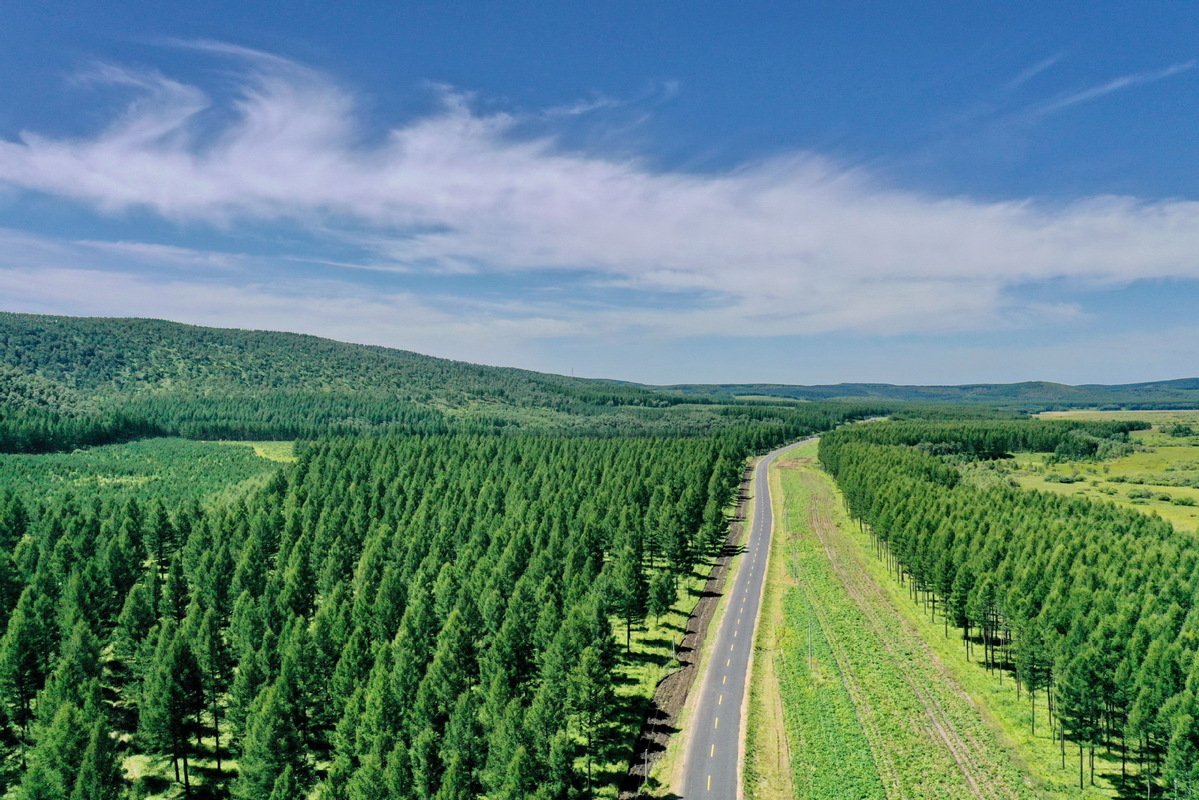Xinhua | October 13, 2023

Aerial photo taken on Aug. 23, 2021 shows the scenery of Saihanba forest farm in northern China's Hebei province. [Photo/Xinhua]
The nation's forest reform has led to an increase in farmers' incomes and improved the environment, said officials from the National Forestry and Grassland Administration.
"The reform has gained public support, resulting in green mountains and improved incomes," Tang Fanglin, deputy head of the administration, said at a State Council Information Office news conference on Thursday.
Under the reform, farmers have become the "owners" of the forests, leading to a significant decrease in illegal logging and an increase in afforestation efforts, he said.
With 171 million hectares of collective forest land, accounting for 60 percent of the country's forest area, the reform involved about 100 million people in rural communities, he added.
Starting in 2008, the nationwide reform has seen forest stock volume rise by nearly 85 percent, or nearly 3.9 billion cubic meters, Tang said.
The reform has also created new opportunities for rural economic development, with around 300,000 new forest operations, such as family-run forest farms and forestry cooperatives, having been set up.
The annual output value of the forestry industry exceeded 8 trillion yuan ($1.1 trillion) last year, with more than half of the income for farmers in some forested counties coming from the forestry sector. The annual forestry output in 2008 was 1.44 trillion yuan.
Jiewen village in Wuping county, Fujian province — the first place that the forest reform was carried out — has witnessed increases in farmers' incomes through the development of ecotourism and forest economies. The per capita annual income of farmers has increased from 1,600 yuan before the reform to nearly 30,000 yuan as of last year.
Wang Junzhong, a senior official from the administration, said at the news conference that collective forests in China provide 80 percent of the domestic timber.
Various areas have developed green industries based on collective forest resources, including tea oil trees, walnuts, peppers and goji berries.
"However, mountainous and forested areas still lag in economic development, and so to address this, the administration plans to reasonably utilize collective forest resources and develop specialty forestry industries," he said.
The administration plans to support pilot regions such as in the provinces of Fujian and Jiangxi, and Chongqing, in order for them to be models for other areas.

